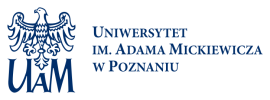
Basic information
- Study programme
- Global Communication
- Speciality
- -
- Organizational unit
- Faculty of Modern Languages and Literatures
- Study level
- First-cycle programme
- Study form
- Full-time
- Education profile
- General academic
- Didactic cycle
- 2023/24
- Subject code
- 09GLCS.110KP.02931.23
- Lecture languages
- English
- Course type
- Obligatory
- Block
- Basic major subjects
|
Period
Semester 5
|
Activities and hours
|
Number of ECTS points
3
|
Goals
| Code | Goal |
| C1 | This course is an introduction to the theory and practice of professional communication. It specifically aims to: familiarise students with the theory and terminology of professional communication; |
| C2 | familiarise students with the principles of professional communication practice to ensure students’ further professional development; |
| C3 | develop the ability to search, analyse, select and evaluate information on various aspects of professional communication; |
| C4 | present the role of ethics in professional communication. |
Subject learning outcomes
| Code | Outcomes in terms of | Learning outcomes | Examination methods |
| Knowledge – Student: | |||
| W1 | has basic knowledge of the theory of professional communication and is familiarised with the field’s basic concepts and terminology | GLC_K1_W05, GLC_K1_W08 | Written exam, Project |
| W2 | understands and explains the principles of professional communication practice | GLC_K1_W04, GLC_K1_W08 | Written exam, Project |
| Skills – Student: | |||
| U1 | can apply acquired knowledge of the theory and practice of professional communication to solve work-related problems and manage individual and teamwork and professional activities | GLC_K1_U01, GLC_K1_U02, GLC_K1_U07, GLC_K1_U12, GLC_K1_U14 | Written exam, Project |
| U2 | is able to use appropriate terminology when referring to/discussing various aspects of professional communication | GLC_K1_U07, GLC_K1_U09 | Written exam, Project |
| U3 | is able to search, analyse, select and evaluate information on various aspects of professional communication by using various sources and methods of accessing them | GLC_K1_U04, GLC_K1_U10 | Written exam, Project |
| Social competences – Student: | |||
| K1 | is ready to update and develop their knowledge, skills and competences related to professional communication to ensure further professional development | GLC_K1_K01, GLC_K1_K02 | Written exam, Project |
| K2 | is ready to initiate communication activities and build interpersonal relations in linguistically and culturally diverse international professional settings | GLC_K1_K04, GLC_K1_K07 | Written exam, Project |
| K3 | is ready to perform duties at work in a professional and ethical way | GLC_K1_K06 | Written exam, Project |
Study content
| No. | Course content | Subject learning outcomes | Activities |
| 1. |
Defining profesional communication |
W1, W2, U1, U2, U3, K1 | Lecture |
| 2. |
Genres of professional communication |
W1, W2, U1, U2, U3, K1 | Lecture |
| 3. |
Professional communication competences and skills |
W1, W2, U1, U2, U3, K1 | Lecture |
| 4. |
Workplace culture |
W1, W2, U1, U2, U3, K1 | Lecture |
| 5. |
Identities at work |
W1, W2, U1, U2, U3, K1 | Lecture |
| 6. |
Relationship building and politeness at work |
W1, W2, U1, K1, K2, K3 | Lecture |
| 7. |
Managing communication in organizations |
W1, W2, U1, U2, U3, K1, K2, K3 | Lecture |
| 8. |
Crisis communication |
W1, W2, U1, U2, U3, K1, K2, K3 | Lecture |
Additional information
| Activities | Teaching and learning methods and activities |
|---|---|
| Lecture | Lecture with a multimedia presentation of selected issues, Conversation lecture, Problem-based lecture, Discussion, Work with text, Case study, Game/simulation, Audio and/or video demonstrations, Activating method - "brainstorming", Activating method - SWOT analysis, Work in groups |
| Activities | Credit conditions |
|---|---|
| Lecture |
- Attendance is not obligatory. - Preparation of one project (individual/group) on a selected topic and obtaining a positive grade
Grading scale: |
Literature
Obligatory- Bhatia, V., Bremner, S. 2014. The Routledge handbook of language and professional communication. London/New York: Routledge.
- Cornelissen, J.P. 2008. Corporate communication: A guide to theory and practice. London: Sage.
- Hoffman, M.F. i Ford, D. J. 2009. Organizational rhetoric: Situations and strategies. London: Sage Publications.
- Pan, Y., Wong Scollon, S., Scollon, R. 2002. Professional communication in international settings. Malden/Oxford: Blackwell Publishers.
- Schnurr, S. 2012. Exploring professional communication: Language in action. London/New York: Routledge.
- Tench, R., Yeomans, L. 2006. Exploring public relations. Harlow: Pearson Education.
- Wąsikiewicz-Firlej, E. 2017. On (de)constructing corporate identity: An ecolinguistic approach. Poznań: Wydawnictwo Naukowe UAM.
- Materials prepared by the tutor (authentic texts, audio/visual material)
Calculation of ECTS points
| Activities | Activity hours* | |
| Lecture | 30 | |
| Reading the indicated literature | 30 | |
| Preparation for the exam | 20 | |
| Preparation of a project | 10 | |
| Student workload |
Hours
90
|
|
| Number of ECTS points |
ECTS
3
|
|
* academic hour = 45 minutes